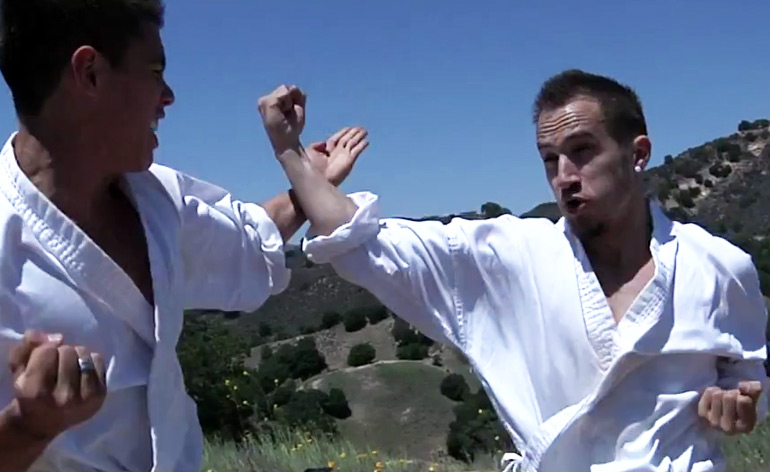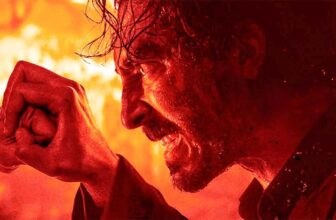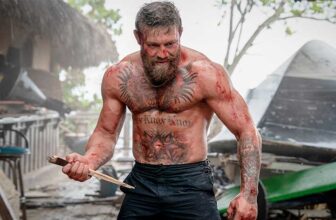
With most adaptations of a popular source material, it’s almost expected, or at least hoped, for the live-action film to show up the animated version. But ultimately, the reverse ended up being the case for “Street Fighter II: The Animated Movie”. Don’t let the title fool you – this isn’t an animated sequel to the atrocious first stab at transitioning the “Street Fighter” series to live action in 1994. Released the same year in Japan, the film derives its title from the game “Street Fighter II”, an appropriate choice given that this is what most fans regard as the true beginning of the series -it’s nothing like live-action film at all!
Trailer
Cast
Leading the way is the series flagship character Ryu, voiced by Kojihiro Shimizu in the Japanese dub while Skip Stellrecht, under his stage name of Hank Smith, provides the voice in the English dub. It’s a matter of personal preference whether Western viewers want to read or hear their mother tongue, but both men handle the role well. Smith would go on to reprise his role in the film “Street Fighter Alpha – the Animation”, which, in an interesting side note, saw fighting legend Kane Kosugi, voice the character in the Japanese version!
Ryu’s close friend Ken Masters is voiced by Kenji Haga and Eddie Frierson (credited as Ted Richards) in their respective dubs, while Chun-Li is handled by the voice talents of Mika Fujitani and Lia Sargent (credited as Mary Briscoe), while Guile is voiced by Masane Tsukayama and Kirk Thorton (credited as Donald Lee). The series’ major villain M. Bison rounds out the major cast, brought to life by the voice talents of Takeshi Kusaka and Tom Wyner (credited as Phil Matthews), and while the majority of the characters from the game also appear in the film, none are reduced to superfluous deadweight as so many were in the original film.
Plot
The film opens in a dark, stormy field in the midst of Japanese martial arts extraordinaire Ryu in a protracted duel with one of the world’s most feared fighters, Sagat aka “The Emperor of Muay Thai”. Though Sagat holds his own, Ryu ultimately emerges the victor after delivering a powerful Metsu Shoryuken which leaves a massive scar on Sagat’s chest. Years after his victory, Ryu continues his life as a solitary vagabond wandering all across Asia and occasionally engaging in challenge matches with formidable fighters like movie star Fei Long, always with the aim of expanding his own power to its ultimate peak.
What Ryu doesn’t know is that ever since his match with Sagat, he has been monitored by the nefarious Shadaloo organization, under the leadership of the megalomaniacal M. Bison, who hopes to build an army of the world’s most formidable martial artists all under his command. Even worse, Ryu’s close friend and former training partner from America, Ken Masters, is himself on Bison’s radar following his defeat of T. Hawk in his bid to find an opponent equal to Ryu’s skill level.
Meanwhile, Interpol agent Chun-li persuades American military Captain Guile to join forces with her in their shared bid to bring down Bison and Shadaloo. Though Guile holds his own personal vendetta against Bison and initially prefers to take down Shadaloo alone, he eventually agrees. Unfortunately, their pact comes right as Bison dispatches his hitman Vega to take out Chun-li, along with his targeting of Ken as the newest unwilling recruit in Shadaloo’s army.
Action
It might seem unusual for an anime film to employ the services of a fight choreographer, but “Street Fighter II” does just that. Under the direction of Kazuyoshii Ishii, Seidokaikan Karate founder and creator of the K-1 Kickboxing circuit, along with the late Andy Hug, one of K-1’s most prestigious champions and a Seidokaikan practitioner himself, the film’s abundant martial arts duels strive to craft an authenticity of the superhuman fighting skills seen in the game that seem believable for the viewer. This is exactly what a “Street Fighter” adaptation should aspire to do.
As in the games that spawned it, “Street Fighter II” establishes a world in which the abilities its characters possess are perfectly normal, but which are also a product of training and harnessing of their natural energies, not something that they are simply capable of from birth. Which is ultimately what makes the incredible nature of the action seem believable to the viewer. And how incredible it is! The special abilities drawn from the game, especially Ryu and Ken’s Hadoukens, could have single-handedly saved the first film had they been half as jaw-dropping in live-action as they are in animated form -they elevate the action in the film to a whole other level of amazing. The opening battle between Ryu and Sagat, while rather darkly lit, is more intense and atmospheric than anything seen in either live-action film, and sets a high bar for the film that will follow it.
In another story, many of the action sequences involving Ryu would seem forced and extraneous, and yet it is precisely what sets the film apart from the original live action adaptation. Ryu sees every match he partakes in as an opportunity for his own personal growth as a fighter, rather than a quest to prove his own supremacy to the world, leaving his monk-like existence of devoting himself to the perfection of his skills something the viewer is genuinely compelled to root for.
The film is also bloodier than one might expect (and, if you watch the uncut Japanese version, a little more risqué in certain scenes), but what really distances the film from its live-action counterpart is not only its far more serious tone, but the greater respect it lends its characters, with none of them benefitting more from it than M. Bison. Little more than a dastardly Disney villain who, when the time came to back up his voluminous boasting mostly got his rear kicked in the live-action film, his animated counterpart is the combination of smug egomania and Psycho Power-fueled brawn that fans of the games know him as. Dwarfing the supremely buff Ryu and Ken with a chest and shoulders that would span the width of a bus, this is a Bison who is more than capable of grabbing an opponent’s head and power slamming him into the ground with one hand. And yet, for all the spectacular Hadouken and Shoryuken-driven combat in the film, perhaps its greatest achievement over the first live-action film is how much better it handles the “Street Fighter” character roster.
With the story largely focused on Ryu, Ken, Chun-Li, Guile, and Bison, other characters are able to be worked into the film in minor roles without feeling shortchanged. Whether its Vega’s knockdown dragout fight with Chun-Li or Ryu’s intense but civil sparring match with Fei Long, no character seen in the film feels like they’re simply warming the bench, made that much better by the fact that none are morphed into something they’re not as in the live-action film (Fei Long’s actually a Bruce Lee-analogue this time?! How do you like that!)
Summary
The live-action adaptations of “Street Fighter” that the world has seen (thus far) cannot hope to compare to “Street Fighter II: The Animated Movie”. If you’re looking for a jumping on point for the series outside of the games themselves, or even a start point for anime as a whole, you’ve come to the right place. “Street Fighter II” is a lot of things – an excellent anime, a great cinematic take on one of gaming’s greatest series, but most of all, proof positive that the animated version is perfectly capable of picking up the slack whenever the live-action take falls short (something that “The Last Airbender” also had to learn the hard way.)
We’re keen to see how Joey Ansah’s latest live-action series, “Street Fighter: Assassin’s Fist” (released this coming Friday on Machinima’s YouTube channel) stacks up to be the version we’ve all been poised on the edge of our seats for, stay tuned!
Trivia
- Although Akuma does not appear in a significant role in the film, he can be seen sitting beside a wall when Ryu travels to India.
- When Ken proposes to his girlfriend Eliza, he passes a truck carrying the Capcom logo, Capcom being the game manufacturer that created the “Street Fighter” series.
- In the Japanese version of the film, M. Bison, Vega, and Balrog are each referred to by the names they are known by in Japan – Vega, Balrog, and M. Bison, respectively.
Film Rating: 8.5/10
BUY AT AMAZON
[amazon-element asin=”B00005M6RH” fields=”lg-image, Actor, Format, RunningTime, RegionCode, Studio, Format” labels=”Actor::Actors: ,RunningTime::Run Time: ,Format::Format: ,Studio::Studio: ,RegionCode::Region Code: “]
[amazon-element asin=”B00005M6RH” fields=”ItemDescription,gallery,new-price,LowestUsedPrice,button” labels=”new-price::New From:,LowestUsedPrice::Used From:” msg_instock=”Available” msg_outofstock=”Currently unavailable”]







This is the best anime and best movie ever. From this film I started to train in martial arts.